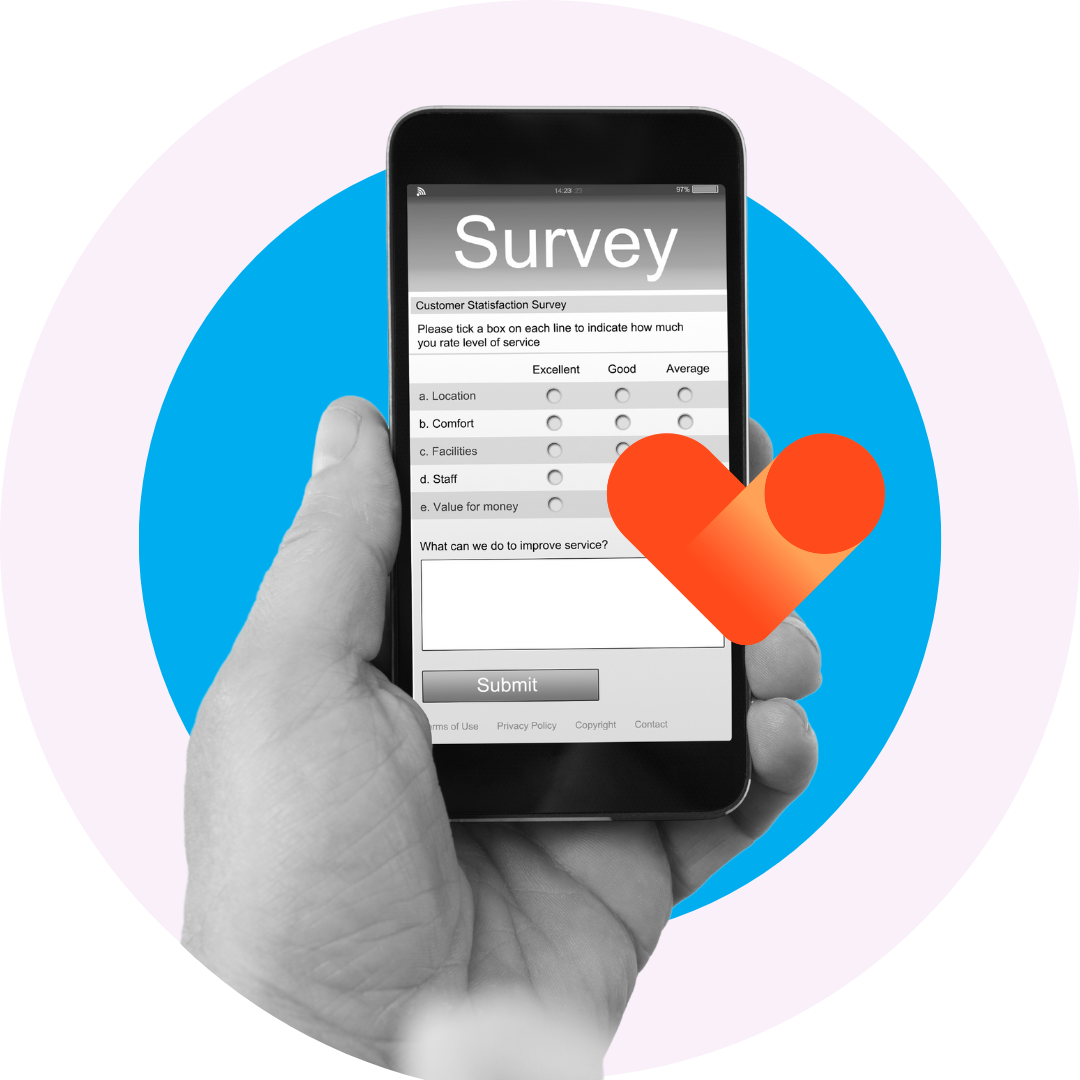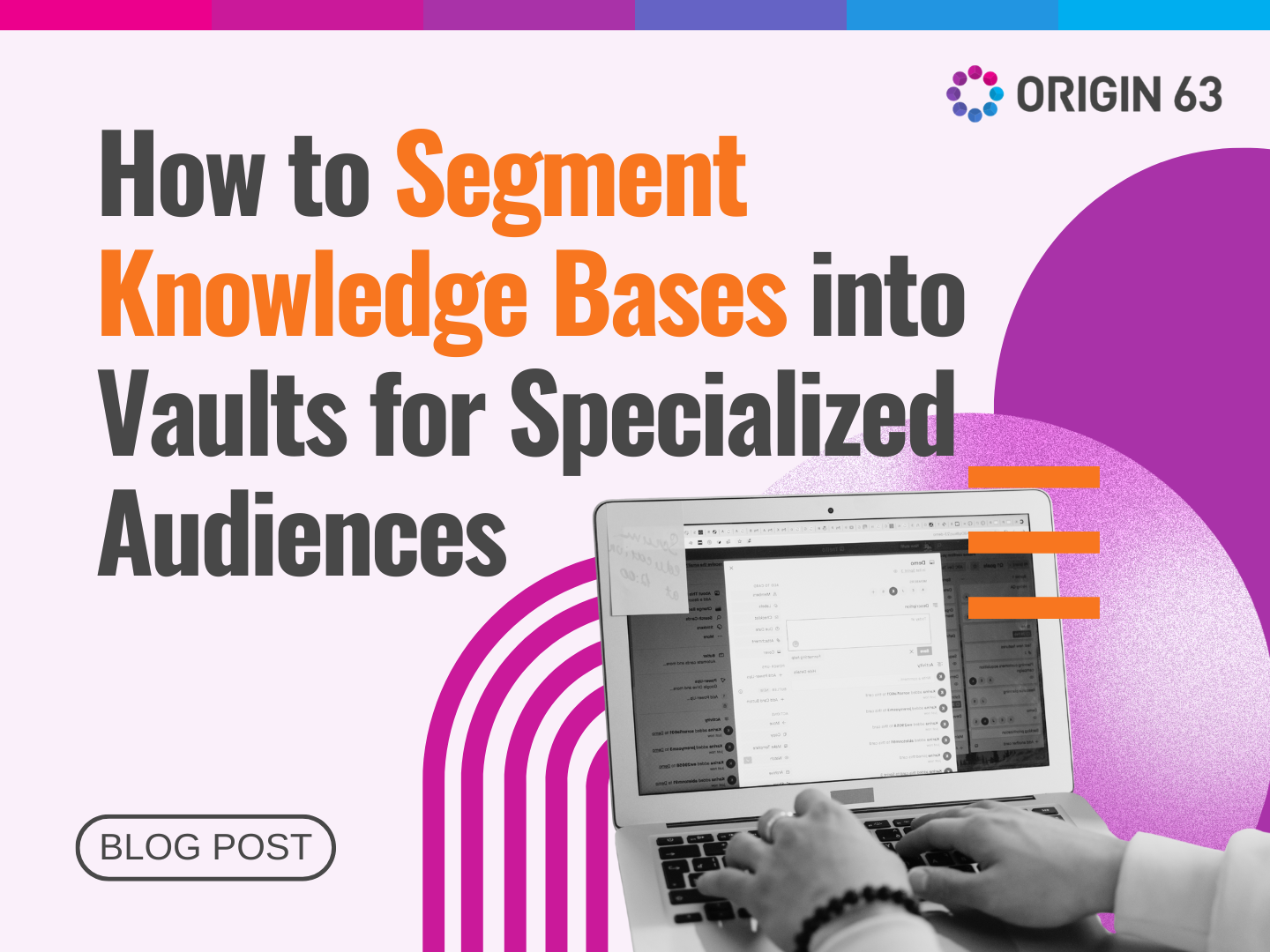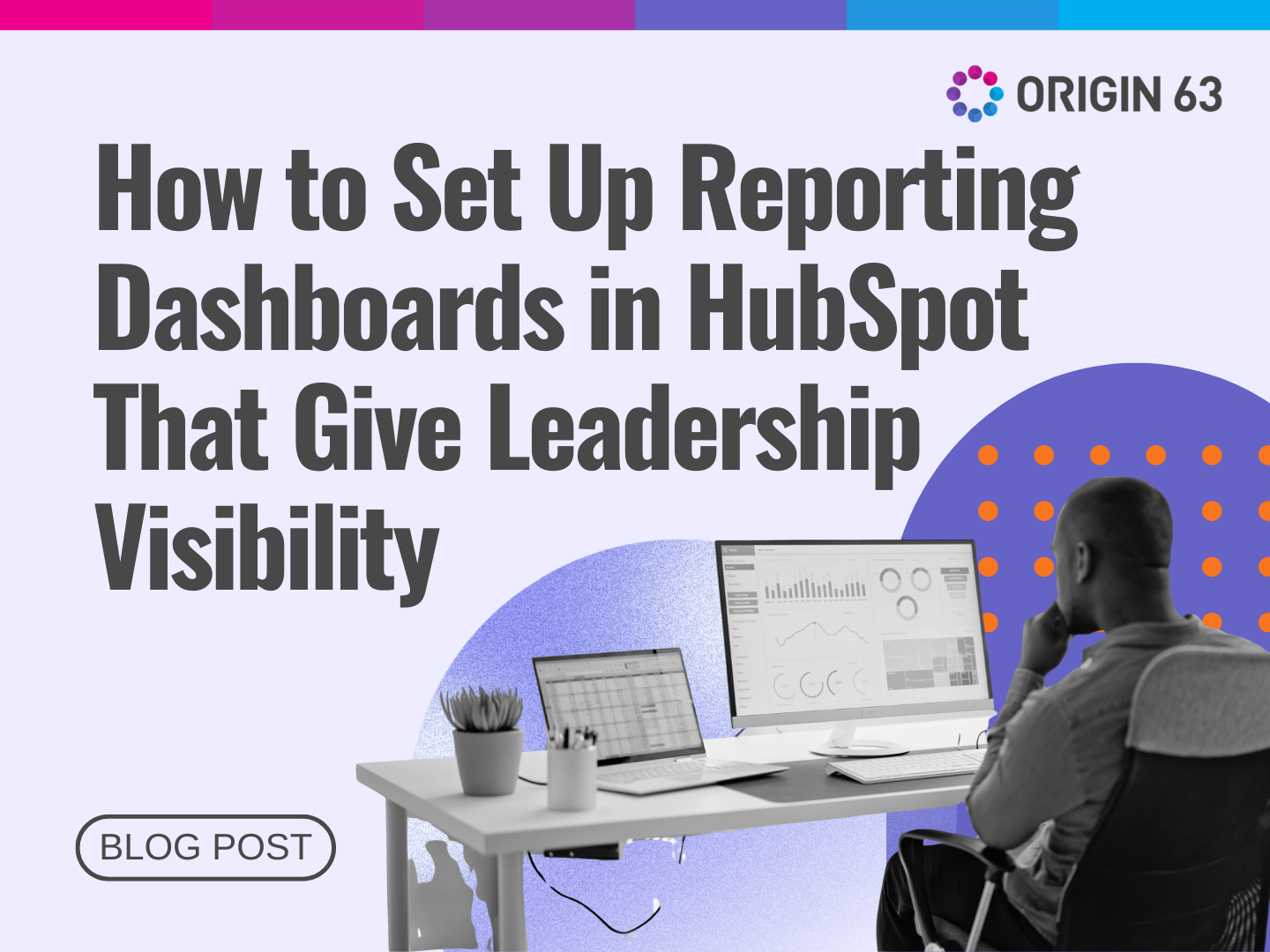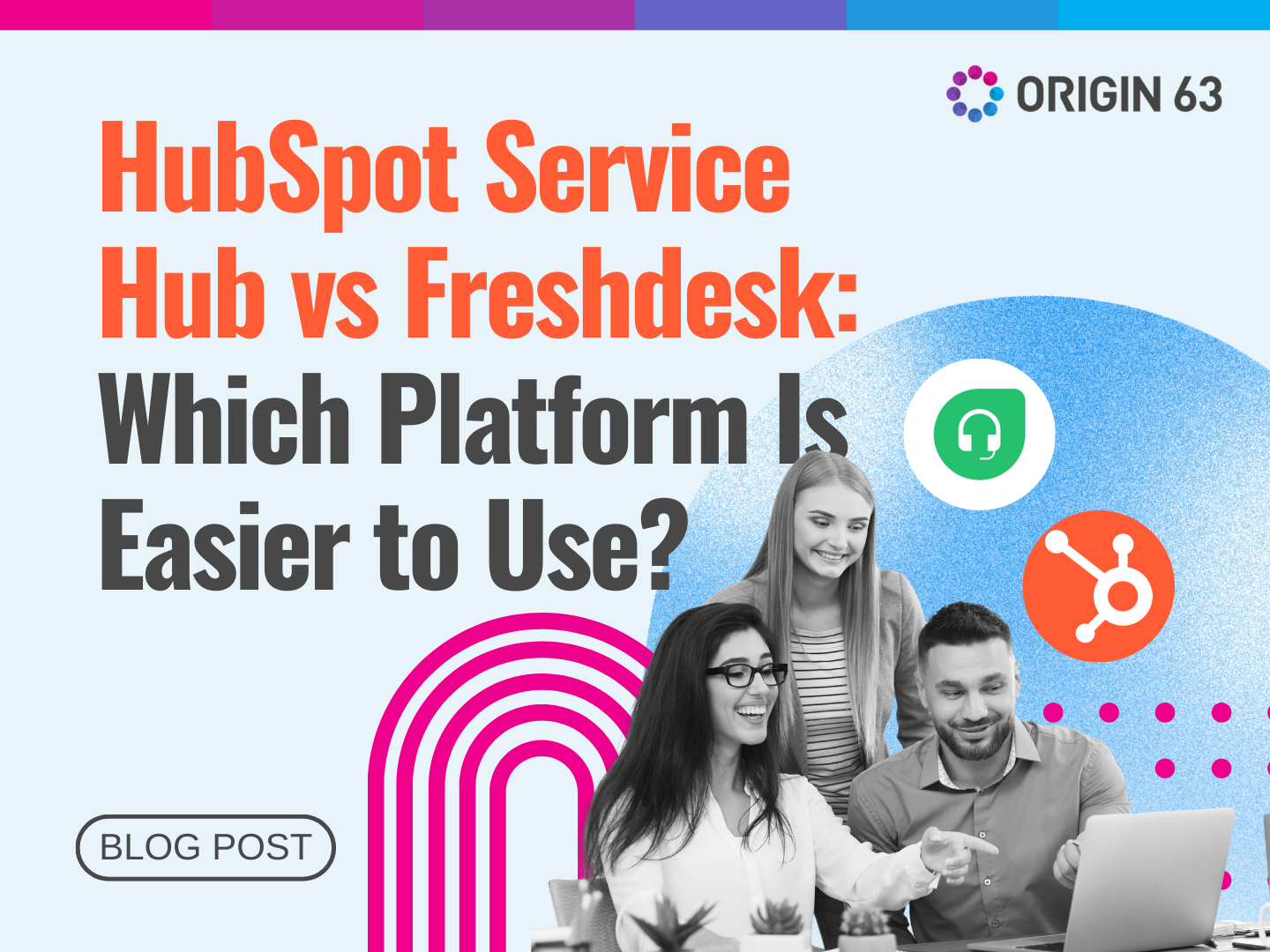Having clients is great, but having satisfied clients is even better. Why? Because satisfied customers stick around longer, buy more from you over time, and tell their friends about your business.
On the flip side, unhappy customers will likely take their money elsewhere and warn others to stay away. Most businesses know this, but are you measuring Client Satisfaction enough? Are you taking the time to understand how your customers feel about your products or services?
HubSpot's Survey tools can help. With some simple surveys, you can easily gauge customer happiness levels, get valuable feedback, and take action to improve experiences.
In this guide, we'll explain how to use HubSpot's surveying features to boost satisfaction and retention.
The Power of Understanding Consumer Needs

Today's customers have high expectations. They want businesses to know them and understand their unique needs. 63% of consumers expect companies to have that level of understanding right from the start.
It's not just an empty desire, either. According to Salesforce, nearly 80% of people are willing to share personal information if it means more personalized, contextualized experiences.
If you want to keep your customers happy, you better prioritize knowing them. Make the effort to understand who they are and what they need.
Cost-Effectiveness of Customer Retention vs. Acquisition
Acquiring new customers is expensive. Some studies show it can cost five times more to attract a new customer than to retain an existing one. So, understanding and keeping your current customers happy should be a huge focus.
The benefits of retention go way beyond just cost savings. Existing customers who feel understood and appreciated are a goldmine. They're 50% more likely to try your new products/services and spend 31% more than new customers on average.
Plus, your loyal, satisfied customers are unstoppable brand ambassadors. A full 60% will gladly spread the word about your awesome business to friends and family. That’s free and effective marketing!
Types of Surveys in HubSpot
Keeping your customers and understanding their needs pays much more than constantly chasing new business. What better way to gauge how you're customers feel about you than simply asking them directly?
With HubSpot's survey tools, gathering that valuable feedback is easy. The platform offers three main survey types:
1. Customer Effort Score (CES)
Have you ever gotten an email after contacting a company's support line asking how easy the experience was? That's the customer effort score in action.
Customers rate their interaction from 1 (very difficult) to 7 (very easy) with this survey type. It's a simple way for businesses to see if they are making it too hard for customers to get help or resolve issues.
If you get high CES scores (6s and 7s), that's a good sign your processes are smooth and low-friction for customers. They didn't have to jump through hoops just to get support or resolve an issue.
Low CES scores (1s and 2s) likely mean the customer is required to exert too much unnecessary effort. It may be time to analyze your support workflows and channels to identify areas for improvement.
2. Customer Satisfaction (CSAT)

We've all seen the smiley face surveys before, right? This is the CSAT survey, which allows customers to rate their satisfaction level as unsatisfied, neutral, or satisfied.
These are commonly sent after a transaction or interaction to get the overall satisfaction of the customer with their experience.
Here, the satisfied face is the goal. If a customer gives you that top satisfaction rating after an interaction, you hit the mark! This opens the door to asking for more detailed positive feedback that you can potentially use for review/testimonial purposes.
Neutral or unsatisfied ratings should prompt you to investigate what went wrong and how to course-correct.
3. Net Promaugeoter Score (NPS)
The NPS survey asks one main question: "How likely are you to recommend [Company] to a friend or colleague?" Respondents rate on a scale. For example, responses on a 0-10 scale could mean:
- 0-6 = Detractors (unhappy customers)
- 7-8 = Passives (satisfied but unenthusiastic)
- 9-10 = Promoters (loyal enthusiasts)
Promoters (9s and 10s) are your biggest fans who will happily promote your brand through word-of-mouth recommendations and positive reviews. Nurture these valuable advocates!
Passives (7s and 8s) are satisfied enough to stick around for now but could be easily swayed by your competition. Don't take them for granted.
Detractors (0-6) are unhappy customers who may discourage others from using your products/services through negative word-of-mouth. Detractors require immediate attention to identify and resolve core issues causing dissatisfaction.
This metric is considered the gold standard for measuring overall consumer sentiment toward a brand. Companies strive for a high NPS, which indicates a large base of promoters who will fuel growth through positive word-of-mouth.
Survey Use Cases
Now that we've covered the main survey types, let's dive into when and how to use them to maximize the insights you gain. The right timing and context help you get actionable feedback from your customers.
Common Applications of CES and CSAT Surveys
The customer effort score (CES) and customer satisfaction (CSAT) surveys are great for tying directly to specific customer behaviors or transactions. Some common use cases include:
- Sending a CES survey after a customer support ticket is resolved to gauge how easy/difficult that process was
- Triggering a CSAT survey immediately following an online purchase or service appointment booking
- Surveying satisfaction levels after a customer attended an event or training session you hosted
You want to deploy these surveys at the precise moment when the customer is still thinking about that interaction. That immediacy helps ensure more accurate and contextualized feedback.
Quarterly Global Insights with NPS Surveys

Unlike CES and CSAT, which focus on individual touchpoints, the Net Promoter Score (NPS) survey aims to gauge overall brand sentiment and loyalty among your customer base.
The best practice is sending out NPS surveys quarterly to get a "global" temperature check. This higher frequency helps you spot positive/negative trends in promoter and detractor numbers more quickly.
A strong NPS indicates you're building a solid base of enthusiastic promoters to fuel growth through word-of-mouth. Low scores highlight dissatisfaction that, if not addressed, could impact retention and acquisition.
Custom Surveys for Diverse Purposes
In addition to the pre-built survey types, HubSpot lets you create fully customized surveys from scratch using different question formats such as multiple choice, ratings, and open-text responses.
These custom surveys can be invaluable when you need structured feedback about a specific product, campaign, topic or issue that doesn't fit the other surveys. You control exactly what you want to ask and how you want responses captured.
The possibilities are endless for using customized surveys to gather targeted insights that help optimize all areas of your business based on your customers' voices.
Survey Customization in HubSpot
One of the beauties of HubSpot's survey tools is the ability to customize virtually every aspect to your needs.
Why does this flexibility matter? Because giving your surveys a personal touch increases engagement and resonance with recipients. The more relevant a survey feels, the better quality of responses you'll get.
Here's a quick look at how HubSpot enables you to shape surveys to be an ideal fit:
Dive into HubSpot's Survey Customization Features
Let's use the CSAT (smiley face rating) survey as an example. Out of the box, it's a simple satisfied/neutral/unsatisfied question. But you can easily expand this. For example:
- Add your own custom question text like "How would you rate your experience with our new online ordering system?"
- Include supporting visuals like your company logo or product screenshots.
- Adjust the rating scale to 5 options instead of 3 (Very Unsatisfied, Unsatisfied, Neutral, Satisfied, Very Satisfied).
- Make the rating a required field so you don't get incomplete responses.
You control the entire look, feel and framework of the survey.
For instance, you could design a bright, colorful survey with emoji ratings and your brand's fun, casual tone for a young target audience. Or a more professional-looking survey with a 10-point scale for getting granular feedback from business customers.
The flexibility to customize allows you to craft an on-brand survey experience tailored perfectly to your audience for better response rates and insights.
Emphasizing Customization in Follow-up Questions and Thank-You Notes

Customization is especially valuable in the follow-up question and thank-you message sections. With follow-ups, you can set rules to trigger an additional open-ended question based on the recipient's rating.
For instance, if someone gives an "unsatisfied" rating, you can automatically prompt them to provide details about their poor experience. If it's a "satisfied" rating, the follow-up could ask what specifically impressed them.
Similarly, you can tailor pre-set responses to align with each rating outcome for the thank-you message. A short, polite note may suffice for neutral ratings, while you could include a link to provide public reviews for high satisfaction scores.
These smart personalization capabilities make customers feel truly heard and appreciated, encouraging higher response rates and richer feedback.
How to Set Up Follow-up Questions in HubSpot Surveys
Step 1: In your HubSpot account, go to Automation> Surveys.
Step 2: Create a new survey or edit an existing one.
Step 3: Navigate to the "Feedback" tab.

Step 4: Click on the "1 - 3 Difficult" tab to enter text for customers who gave a low score.
Step 5: Click on the "4 - 5 Neutral" tab to enter text for customers who gave a neutral score.
Step 6: Click on the "6 - 7 Easy" tab to enter text for customers who gave a high score.
Step 7: In the right panel, preview the follow-up question.
Step 8: Click "Save" or continue to the next step.
The Significance of Post-Survey Actions
Collecting customer feedback through surveys is valuable, but what you do with that feedback counts more. An unopened report of survey responses won't help improve your business. That's why you should take swift action based on the insights.
Here are a few things you'll want to set up in HubSpot to make the most of your survey data:
Setting Up Workflows for Internal Follow-ups
If you receive negative or critical feedback (low CSAT ratings, detractor NPS scores, etc.), you'll want a plan of action to investigate and address those concerns. HubSpot allows you to trigger follow-up workflows based on survey responses automatically.
For example, you could set a task for a case manager to follow up with any detractor or notify a product team about recurring complaints. This accountability helps ensure no dissatisfied customer slips through the cracks.
How to Set Up Automated Workflows Based on Survey Responses in HubSpot
Step 1: In your HubSpot account, go to Automation > Surveys.
Step 2: Create a new survey or edit an existing one.
Step 3: Navigate to the "Automation" tab.

Step 4: Click "Create workflow" below the "1 - 3 Difficult" section to set up actions for low scores.
Step 5: Click "Create workflow" below the "4 - 5 Neutral" section to set up actions for neutral scores.
Step 6: Click "Create workflow" below the "6 - 7 Easy" section to set up actions for high scores.
Step 7: In the right panel, select the actions you want to automate or click "See more" for other options.
Step 8: Customize the actions based on your preferences.
Step 9: Click "Save" or continue to the next step.
Encouraging Reviews and Advocacy from Satisfied Customers
Your happiest, most satisfied customers are prime advocates who can help drive new business. HubSpot makes it easy to reach out to promoters and highly satisfied customers by prompting them to leave positive reviews on third-party sites.
You can even set up a workflow to automatically share a unique review page link whenever someone gives you top marks on a CSAT or NPS survey. Simple touches like this nurture relationships with brand fans while capitalizing on that positive sentiment.
Don't let survey responses get filed away and forgotten. Streamline your ability to quickly act on feedback—whether resolving issues or doubling down on successes.
Utilizing HubSpot's Analytical Capabilities
Collecting customer feedback is one thing, but the real magic happens when you can analyze and derive insights from that data. Thankfully, HubSpot provides robust reporting features to help you turn survey responses into actionable intelligence.
Filtering and Analyzing Individual Feedback and Trend Data
You can easily view all survey responses across your campaigns within the HubSpot platform. This lets you filter down and read through each individual piece of feedback—critical for identifying common pain points or areas of praise.
However, you can also analyze surveys from a higher level with HubSpot's trend reporting capabilities. Visualize satisfaction levels, effort scores, or net promoter trends over different periods. Spot positive or negative movement quickly.
Slice the data by product/service, customer demographics, or other properties. This top-down and bottoms-up view helps you address individual concerns and monitor the overall health of customer relationships.
Flexibility in Segmenting Responses for Different Customer Types
Another key analytical benefit? The ability to segment survey data across your different customer populations and profiles. Maybe you want to isolate feedback specifically from:
- Long-tenured customers vs new acquisitions
- Customers who trail a new product vs an established one
- Enterprise accounts vs small business customers
With HubSpot's flexible reporting, you can cut the data in any way that provides you with the most relevant insights for your business. Don't get stuck with a one-size-fits-all view of customer sentiment.
Putting Customer Feedback into Action
Understanding how satisfied your customers are is valuable knowledge for any business. With HubSpot's surveying capabilities, you can efficiently capture those insights straight from the source in an automated, scalable way.
But you shouldn’t just collect feedback. Put that voice of the customer data into action.
Using HubSpot's customization options and workflow automation, you can immediately follow up on negative feedback to resolve issues and nurture relationships with promoters by encouraging reviews and positive word-of-mouth.
At the same time, HubSpot's reporting tools let you analyze survey data from every angle. You can watch trends over time, segment by customer types, and align insights with your broader business intelligence.
With that comprehensive view, you can make smarter, more informed decisions about where to prioritize experience improvements. HubSpot's solution gives you a direct pipeline into how your customers truly feel, setting you up to deliver exceptional service that keeps them coming back.













.png?width=90&height=90&name=Arrows%20Partner%20Badge-test%20(1).png)

